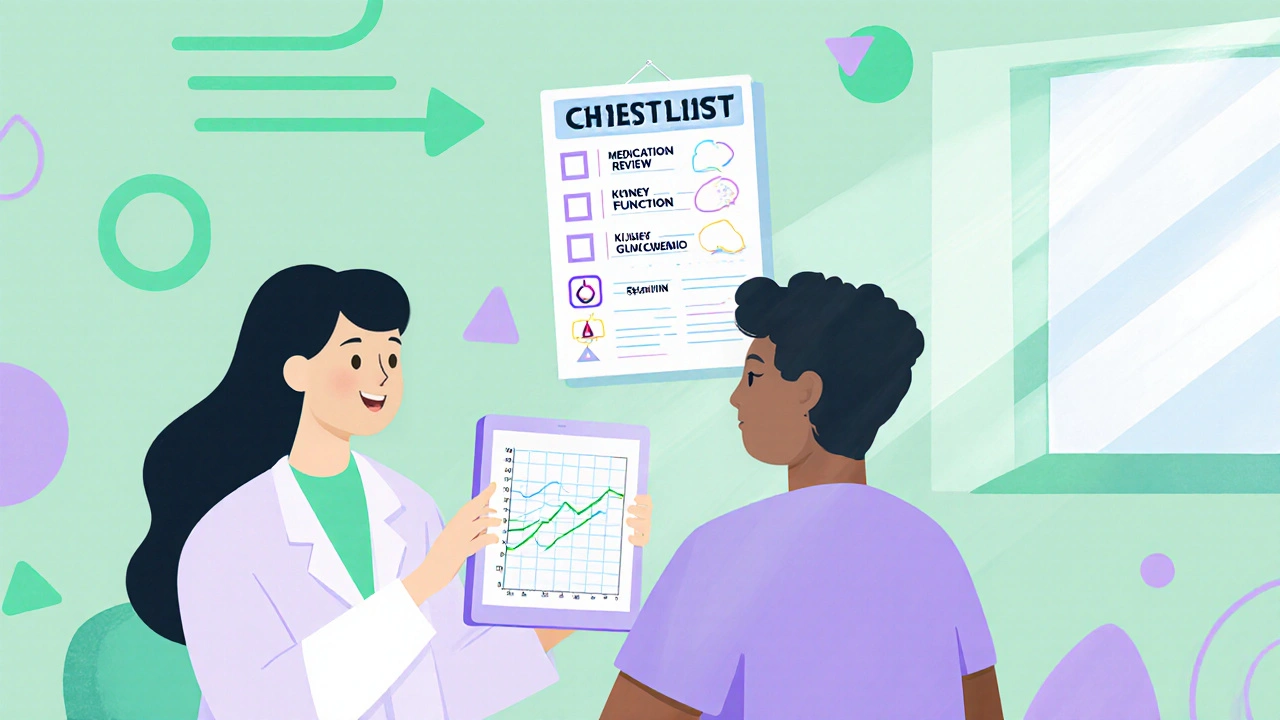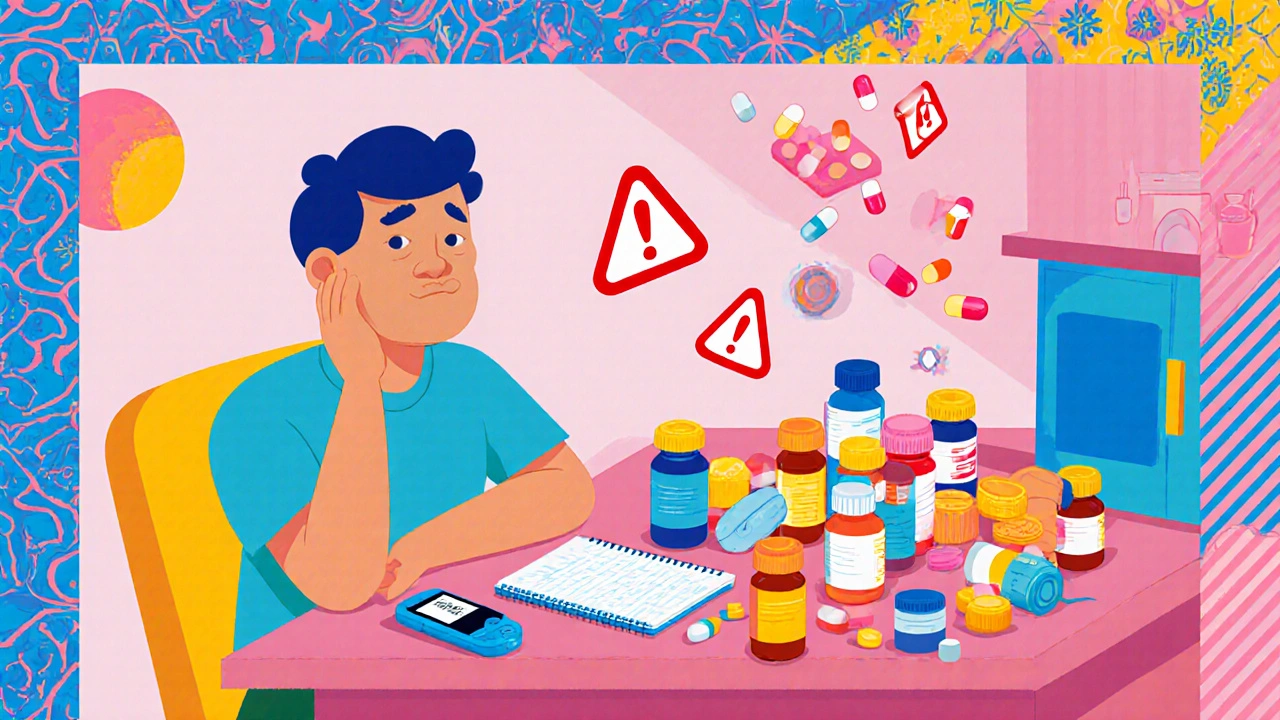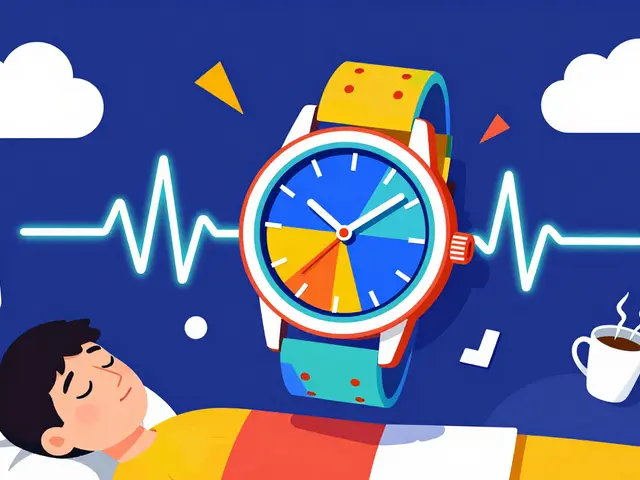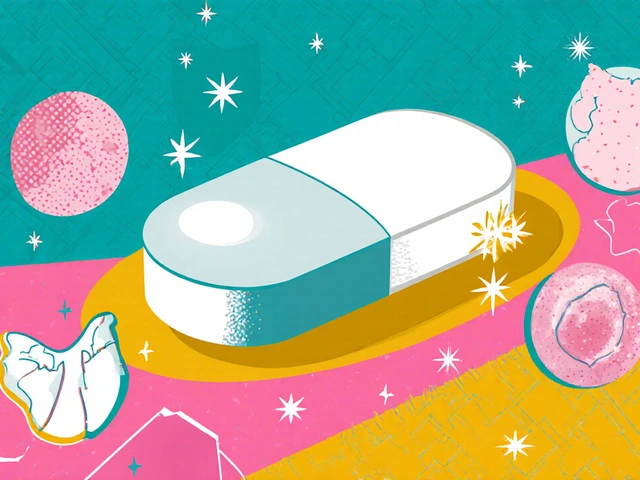Diabetes Drug Interaction Checker
Check for Dangerous Drug Combinations
Enter your diabetes medications and any other drugs you're taking to identify potential interactions.
Diabetes medication interactions can turn a well‑controlled treatment plan into a medical emergency in minutes. Whether you’re a patient juggling multiple prescriptions or a clinician fine‑tuning a regimen, knowing which drug pairs spark trouble is essential. Below you’ll find the biggest red‑flag combos, why they happen, and practical steps to stay safe.
- Identify the three main mechanisms that drive dangerous interactions.
- Spot the high‑risk antidiabetic‑plus‑non‑diabetic drug pairs.
- Learn safer alternatives that keep blood‑sugar swings to a minimum.
- Get a quick‑look reference table for everyday use.
- Find answers to the most common patient and provider questions.
Understanding Why Interactions Matter
When two drugs share a metabolic pathway or affect the same organ system, they can amplify or blunt each other’s effect. In diabetes care this often shows up as unexpected hypoglycemia (dangerously low glucose) or hyperglycemia (high glucose). Both extremes increase the risk of cardiovascular events, hospital admission, and even death. The American Diabetes Association’s 2025 Standards of Care makes clear that “combination therapy must be chosen with a clear understanding of interaction potential.”
Key Mechanisms Behind Interactions
Three biological shortcuts explain most of the trouble you’ll see:
- CYP3A4 is a liver enzyme that metabolizes many oral antidiabetic agents, especially sulfonylureas and meglitinides. Any drug that blocks CYP3A4 (e.g., ketoconazole, certain azole antifungals) can cause drug levels to sky‑rocket, leading to severe hypoglycemia.
- Renal clearance problems affect drugs like Metformin is primarily eliminated unchanged by the kidneys. Impaired kidney function or concurrent nephrotoxic agents reduce clearance and raise the risk of lactic acidosis.
- Pharmacodynamic overlap, where two agents push glucose in the same direction. Combining an insulin‑sensitizer that causes fluid retention with insulin itself can worsen heart failure.
High‑Risk Drug Combinations to Avoid
Below is a snapshot of the most dangerous pairings, based on clinical trials and FDA safety alerts up to 2025.
- Insulin with Rosiglitazone is problematic because both can cause fluid overload, raising the risk of heart failure and peripheral edema. The combination should be reserved for specialist‑controlled settings only.
- Meglitinides (e.g., repaglinide) with ketoconazole (a strong CYP3A4 inhibitor) leads to a 2‑3× increase in drug exposure, often provoking severe hypoglycemia.
- DPP‑4 inhibitors combined with GLP‑1 receptor agonists is discouraged because the mechanisms overlap, offering no extra glycemic benefit while increasing side‑effect load.
- Concurrent use of corticosteroids is known to raise blood glucose by stimulating gluconeogenesis and inducing insulin resistance. When given with any insulin secretagogue, the risk of hyperglycemia spikes dramatically.
- Quinine is a classic hypoglycemia trigger that can augment the effect of sulfonylureas and lead to dangerous lows.
Safer Combination Strategies
Not all combos are risky. Modern agents have been designed to minimize metabolic interference.
- GLP‑1 receptor agonists are thought to have low CYP interaction potential, making them safe partners for most oral agents. Pairing them with basal insulin often improves A1c with less hypoglycemia than insulin alone.
- SGLT‑2 inhibitors are renally excreted but not significantly metabolized by CYP enzymes, so they coexist well with sulfonylureas, DPP‑4 inhibitors, and even thiazolidinediones.
- When renal function declines, switching from metformin to a dose‑adjusted DPP‑4 inhibitor (e.g., sitagliptin) can maintain glycemic control while lowering lactic acidosis risk.
- For patients on multiple medications, consider using a fixed‑dose combination like metformin‑sitagliptin (if available) to reduce pill burden and simplify monitoring.
Monitoring and Patient Counseling Tips
Even the best‑chosen regimen needs vigilant follow‑up. Here’s a practical checklist for clinicians and patients:
- Review the full medication list at every visit, including over‑the‑counter drugs and supplements.
- Ask patients to record glucose readings before meals, at bedtime, and whenever they feel symptoms of low or high sugar.
- When adding a new drug that affects CYP enzymes, schedule an extra glucose check within 48 hours.
- Educate patients on hypoglycemia warning signs (shakiness, sweating, confusion) and how to treat it with fast‑acting carbs.
- For drugs that raise blood glucose (e.g., steroids), advise a temporary dose increase of the antidiabetic or closer glucose monitoring.

Quick Reference: High‑Risk vs Low‑Risk Drug Pairs
| Drug Pair | Interaction Type | Clinical Outcome | Management Recommendation |
|---|---|---|---|
| Insulin + Rosiglitazone | Pharmacodynamic (fluid overload) | Increased heart‑failure risk, edema | Avoid unless specialist supervises; consider SGLT‑2 inhibitor instead |
| Repaglinide + Ketoconazole | CYP3A4 inhibition | Severe hypoglycemia | Reduce repaglinide dose by 50 % or switch to a non‑CYP substrate |
| Metformin + NSAIDs (high dose) | Renal function impairment | Lactic acidosis risk | Monitor creatinine; hold metformin if eGFR <30 mL/min |
| GLP‑1 RA + Insulin (basal) | Complementary mechanisms | Improved A1c, lower hypoglycemia than insulin alone | Recommended combo for many patients |
| SGLT‑2 inhibitor + Loop diuretic | Volume depletion | Orthostatic hypotension | Ensure adequate hydration; monitor blood pressure |
Frequently Asked Questions
Can I take over‑the‑counter pain relievers with my diabetes meds?
Most non‑steroidal anti‑inflammatory drugs (NSAIDs) are safe, but high‑dose ibuprofen can affect kidney function and raise metformin’s lactic acidosis risk. If you need regular pain relief, talk to your provider about the lowest effective dose and periodic kidney checks.
Why do some antibiotics cause low blood sugar?
Certain antibiotics, like quinolones, can inhibit CYP2C9 and increase sulfonylurea levels, leading to unexpected hypoglycemia. Always inform your pharmacist about all diabetes drugs before picking up an antibiotic.
Is it safe to combine a GLP‑1 RA with a DPP‑4 inhibitor?
The ADA advises against it because both act on the incretin pathway. The added drug does not improve glucose control but does increase cost and potential side‑effects like nausea.
How often should I check my blood sugar after starting a new medication?
For drugs that affect CYP enzymes, check fasting glucose twice daily for the first 3-5 days. If the new drug is a renally cleared agent, monitor weekly until steady‑state is reached (about 2 weeks).
What should I do if I experience sudden low blood sugar?
Consume 15 g of fast‑acting carbohydrate (e.g., glucose tablets, fruit juice). Re‑check glucose after 15 minutes; repeat if still <70 mg/dL. If you can’t treat yourself, call emergency services.



September 18, 2025 AT 07:12 AM
Oh great, another pharma safety list-like we needed more paperwork to figure out why my blood sugar flips like a pancake. FYI, those CYP3A4 warnings are basically a “don’t be stupid” sign for anyone who reads the label. If you’re not careful, you’ll end up in the ER faster than you can say “hypoglycemia.”
September 23, 2025 AT 01:12 AM
Behold, the tragic opera of drug interactions! Imagine the drama of insulin and rosiglitazone colliding like star‑crossed lovers on a stormy night, their union birthing fluid overload and a heart‑failure crescendo. The repaglinide‑ketoconazole duet? A sinister symphony of CYP3A4 inhibition, each note amplifying hypoglycemia to a deafening climax. And who could forget the DPP‑4/GLP‑1 mash‑up, a theatrical illusion of benefit that merely inflates the side‑effect cast. Corticosteroids waltz in, conducting a glucose‑raising overture, while sulfonylureas echo the lows in a chilling counter‑melody. The audience-our patients-are left gasping for stability, their glucose meters flashing like frantic stage lights. Yet, amid the chaos, the script offers redemption: GLP‑1 agonists, the sober protagonists with minimal CYP meddling, pairing gracefully with basal insulin. SGLT‑2 inhibitors, the silent guardians, glide through renal excretion without stealing the metabolic spotlight. Fixed‑dose combos, the chorus of simplicity, harmonize doses and reduce pill‑count dissonance. Let us, the clinicians, be the directors who rewrite this tragedy into a balanced ballet, where monitoring is the metronome and patient education the encore. In this grand performance, vigilance is our spotlight, and safety the standing ovation.
September 27, 2025 AT 19:12 PM
I totally get how scary that can be. Keep a log of all meds and check blood sugars often. If you notice lows after a new drug, talk to your doc right away.
October 2, 2025 AT 13:12 PM
Stay sharp and check your sugars before every meal.
October 7, 2025 AT 07:12 AM
Great reminder! Also, make sure to ask about over‑the‑counter meds and supplements-those can sneak in interactions too. A quick medication‑review at each visit can catch hidden risks before they become emergencies.
October 12, 2025 AT 01:12 AM
Review the list each visit. Adjust doses if renal function changes.
October 16, 2025 AT 19:12 PM
Listen, if you’re popping steroids and sulfonylureas, you’re basically asking for a glucose roller‑coaster. Stop mixing without a pharmacist’s green light, or you’ll end up in the ICU wondering why.
October 21, 2025 AT 13:12 PM
Let’s not forget the human side of this. Patients, when you’re on multiple meds, keep a simple diary-time, dose, and blood sugar. It helps your clinician see patterns and dodge dangerous combos. And if you ever feel dizzy or shaky, treat it fast with carbs before it spirals.
October 26, 2025 AT 06:12 AM
All these so‑called “safety tips” are just a distraction. The real problem is the pharma industry pushing us drugs to keep us dependent. They hide the true risks while making us think we’re protected.
October 31, 2025 AT 00:12 AM
Exactly! The “CYP3A4” jargon is a fancy smoke screen. They want us to trust the label, but hidden interactions are everywhere. It’s like a covert operation in our bloodstream.
November 4, 2025 AT 18:12 PM
Appreciate the thorough breakdown. For anyone juggling meds, just remember to keep an updated list and share it with every healthcare provider you see.
November 9, 2025 AT 12:12 PM
When we contemplate the interplay of pharmacokinetics and patient lifestyle, we uncover a delicate equilibrium. Each molecule participates in a larger narrative, influencing not just glucose but the whole physiological tapestry. By honoring this complexity, clinicians can craft regimens that respect both science and the individual’s daily rhythm. It is a reminder that medicine is as much an art as a discipline.
November 14, 2025 AT 06:12 AM
While the article is comprehensive, it fails to address the cost implications of newer agents. Many patients cannot afford GLP‑1 agonists or SGLT‑2 inhibitors, limiting practical applicability.
November 19, 2025 AT 00:12 AM
Thank you for the detailed guidance. 👏 Ensuring patients have access to safe medication combinations is paramount. 🌟
November 23, 2025 AT 18:12 PM
Oh sure, we’re all supposed to trust a list compiled by the same corporations that profit from these drugs. 🙄 Might as well believe the moon is made of cheese.
November 28, 2025 AT 12:12 PM
Nice info 😐
December 3, 2025 AT 06:12 AM
Great post! I’ll definitely apply these tips in my practice and keep my patients safe.